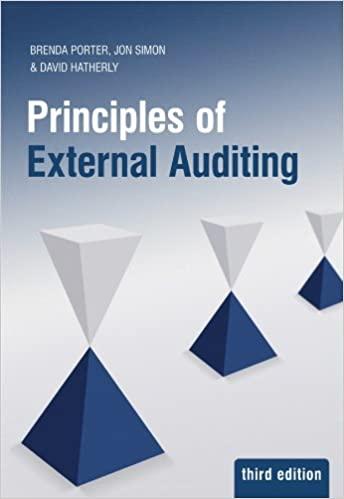Question
1. The revenue recognition principle indicates that revenue is recognized when I. The benefits can be measured reliably. II. The sales transaction is initiated and
1. The revenue recognition principle indicates that revenue is recognized when
I. The benefits can be measured reliably. II. The sales transaction is initiated and completed. III. It is probable the benefits will flow to the company. IV. The date of sale, date of delivery, and billing have all occurred.
a. I, II, and III.
b. II & III.
c. I & III.
d. I, II, III, & IV
2. Sales in which the buyer is not yet ready to take delivery but does take title are
a. barter sales
b. bill and hold sales
c. layaway sales
d. sales with buyback
3. An alternative not available when the seller is exposed to continued risks of ownership through right of return of the product is
a. recording the sale, and accounting for returns as they occur in future periods.
b. not recording a sale until all return privileges have expired.
c. recording the sale, but reducing sales by an estimate of future returns.
d. all of these are alternatives.
4. In accounting for a long-term construction-type contract using the percentage-of-completion method, the gross profit recognized during the first year would be the estimated total gross profit from the contract, multiplied by the percentage of the costs incurred during the year to the
a. total costs incurred to date.
b. total estimated cost.
c. unbilled portion of the contract price.
d, total contract price
Step by Step Solution
There are 3 Steps involved in it
Step: 1

Get Instant Access to Expert-Tailored Solutions
See step-by-step solutions with expert insights and AI powered tools for academic success
Step: 2

Step: 3

Ace Your Homework with AI
Get the answers you need in no time with our AI-driven, step-by-step assistance
Get Started


